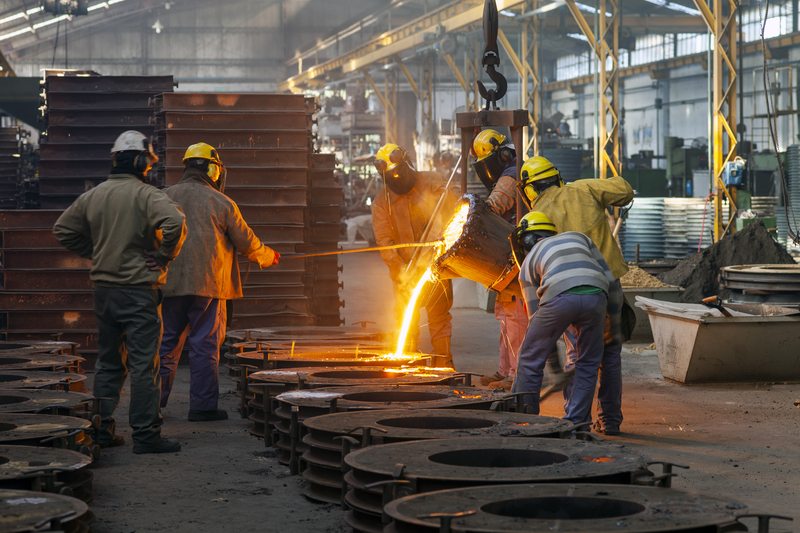Little Known Facts About Aluminum Castings Company.
Some Of Aluminum Castings Company
Table of ContentsThe Only Guide for Aluminum Castings CompanyThe 5-Minute Rule for Aluminum Castings CompanyAn Unbiased View of Aluminum Castings CompanyThe 9-Minute Rule for Aluminum Castings CompanyThe 6-Minute Rule for Aluminum Castings CompanyAluminum Castings Company for DummiesSome Known Incorrect Statements About Aluminum Castings Company The Basic Principles Of Aluminum Castings Company
There are 2 key kinds of die spreading used in the aluminum casting market: warm chamber pass away casting and chilly chamber die spreading. The key difference between these techniques is just how the molten steel is delivered to the mold. In hot chamber die casting, commonly utilized for lower melting point steels, the melting pot is directly connected to the maker, and a bettor forces the material through a gooseneck right into the die dental caries.
Aluminum Castings Company Things To Know Before You Get This
In these methods, the mold is purposefully damaged or damaged away in order to extract the finished light weight aluminum casting. Common processes under the classification of expendable mold spreading consist of (financial investment casting),,, and investment casting. When making custom aluminum parts using expendable molds, producers put molten aluminum or light weight aluminum alloys right into the mold, which is after that broken apart to release the strengthened metal component.
The is one of the oldest and most favored kinds of light weight aluminum casting. It involves condensing specialty shop sand, frequently strengthened with clay or resin, around a specifically crafted multiple-use pattern that figures out the shape and internal information of the finished aluminum item. The pattern system includes risers and vents to take care of the flow of liquified metal and to stop casting defects such as shrinking porosity.
Examine This Report on Aluminum Castings Company

This mold is then preheated previous to the pouring of liquified aluminum or aluminum alloy. As the steel fills up the shell, it catches the detailed details and great surface coating of the mold and mildew. As soon as cooled down, the ceramic is mechanically or chemically escaped, permitting the removal and separation of private cast parts.
The Of Aluminum Castings Company
Long-term mold and mildew casting makes use of recyclable steel molds and is optimal for mass manufacturing with constant quality and less waste. Expendable mold and mildew casting utilizes single-use mold and mildews, like sand or foam, providing layout adaptability and lower tooling costs for models or short runs. Die casting is best for generating high quantities of aluminum components that require limited tolerances, great information, and smooth surfaces.
The Toshiba Machine DC-J Collection consists of die casting devices appropriate for light weight aluminum. Known for their durable building and high injection performance, these machines guarantee reliable and precise spreading (Aluminum Foundry).

While aluminum can be utilized in its pure form, it is commonly alloyed with various other steels to improve its residential or commercial properties or the residential properties of the various other metals. Aluminum alloys are categorized into 8 collection, numbered from one to 8.
Not known Incorrect Statements About Aluminum Castings Company
This alloying boosts the strength and solidity of aluminum but decreases its ductility and rust resistance. The 2000 collection alloys are challenging to weld but can be warm dealt with to enhance their buildings. The 3000 collection alloys are mainly alloyed with manganese. This click this link mix enhances rust resistance while offering modest toughness.
In addition, it includes high ductility and a really smooth finished surface area. The 4000 collection alloys are alloyed with silicon, which reduces the melting factor and boosts fluidness. This makes it a preferred choice for casting, as it is very easy to create in its liquified state. The 4000 series is also generally made use of as a filler for welding and brazing applications.
What Does Aluminum Castings Company Mean?
This collection is categorized as a high-strength alloy, particularly suited for sheet and plate applications because of its exceptional weldability. Its resistance to rust from acids and alkalis makes it perfect for usage in extreme and aggressive settings (Core Making). The 6000 collection alloys are alloyed with both magnesium and silicon, providing an equilibrium of strength, mechanical homes, and corrosion resistance
Handling the 6000 series needs specialized and innovative tools, which can be complicated and expensive. This collection is recognized for its superb rust and oxidation resistance, as well as its ease of finishing, therapy, and workability. The 7000 series aluminum alloys are the greatest and most sturdy amongst aluminum kinds, with toughness equivalent to about two-thirds of industrial-grade A3 steel.
Some Known Incorrect Statements About Aluminum Castings Company
Zinc is the main alloying element in the 7000 series, improving the solidity of the aluminum, despite the fact that zinc's hardness is comparable to that of light weight aluminum on the Mohs range. The 8000 series aluminum alloys are primarily alloyed with tin, along with tiny amounts of copper and nickel (Sand Molding). While these alloys supply lower toughness compared to various other collection, they succeed in machinability and wear resistance
Light weight aluminum cast heatsinks are electrically conductive, enabling them to be grounded successfully. They are frequently cast with integrated features that decrease the requirement for secondary procedures, such as added machining or setting up, causing additional cost financial savings. Aluminum casting is frequently used to manufacture brackets for both heavy-duty industrial devices and family devices.
Indicators on Aluminum Castings Company You Should Know
The single-piece building and construction of aluminum brackets improves their toughness and sturdiness, minimizing the probability of failure. If openings are called for, they can be included directly in the casting mold, decreasing the need for post-production ending up (https://www.brownbook.net/business/54468848/aluminum-castings-company). Manufacturers have actually increasingly taken on aluminum casting for golf equipment as a result of its longevity, stability, and convenience in shaping